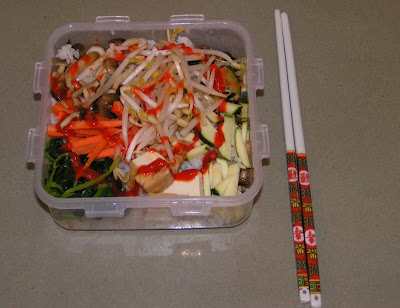

Pam and I spent the last two days hanging around in a field with about 250 engineering students and their robots. Or sitting in a 100-meter-long tent filled with students and their work tables covered in laptops, cordless drills, half-eaten plates of food, broken components, soldering rigs, wheels and tangles of wires. The scene is surreal.
Out on the practice course for the 16th Annual Intelligent Ground Vehicle Competition (IGVC), groups of students walk behind small wheeled vehicles that are jerking along, bumping into barriers, twirling around in circles and occasionally breaking into full-speed straight-ahead mode that has the students trotting to keep up.
Not all the vehicles are moving. Some students are hunched over their 'bot peering at one or more laptops, fingers on the keyboard to muscle the code that drives the GPS, ladar (laser-radar), movie cameras, laptop computers, charging systems and drive systems.
Inside the tent, vehicles are up on blocks with their wheels spinning, or tipped over, or partially disassembled because something isn't working. Some run on tank-like tracks, some have three wheels, some tow trailers with little gas generators on them. They range from crude angle-iron construction to sleek shaped bodies, squat to tall, but they all have masts that run about four feet tall, for the cameras, and small units on the front that look like drip-coffee makers but actually are $5,000 ladar units with a funny brand name: SICK.
Kevin's team is fielding a fine-looking machine called µCERATOPS (that's micro-ceratops, named after the dinosaur). It's a big improvement from last year's Capacitops, a three-wheeler that placed third place overall. The new machine has four wheels and an articulated body like one of those buses that bends. It can turn on a dime, which comes in handy when it noses up to a barrier and needs to turn sideways to get around it.
Kevin and his team (eight students and three faculty) made the semifinals in the design competition and after their second presentation to the judges this afternoon took third place in design. I was a bit disappointed because the vehicle from the winning team (Princeton University) has a plastic-paneled body held together with duct tape. Definitely not elegant, but Dr. Paulik says their presentation was superb.
It doesn't matter, though, because I'm told that the Princeton robot doesn't actually know how to drive the course. And I've seen with my own eyes that µCERATOPS is one of the strongest vehicles in the competition.
So when they all take the field tomorrow for three sets of runs in navigation and autonomous operation, the odds are good that µCERATOPS, from the University of Detroit, will take home some high honors. Stay tuned.




